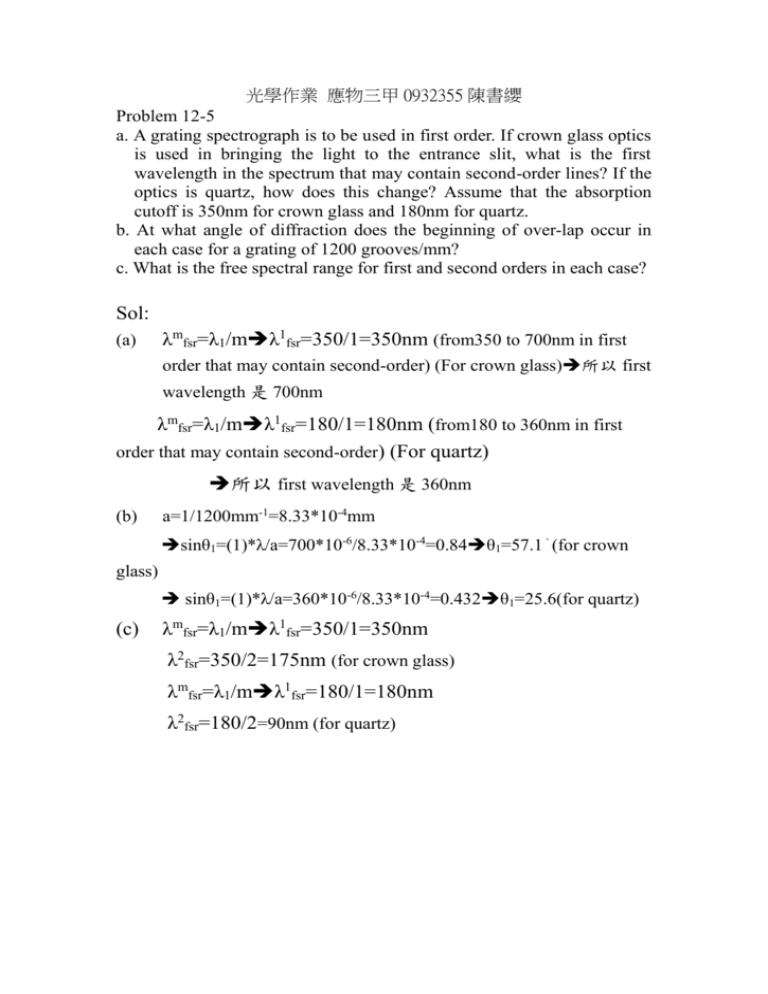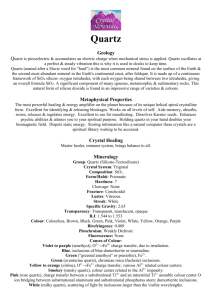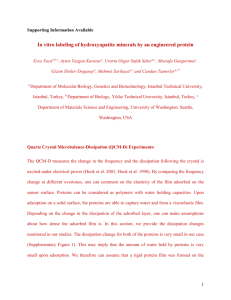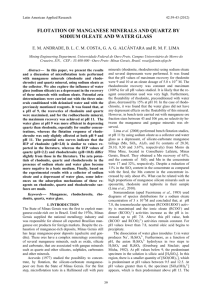應物三甲0932355陳書纓
advertisement

光學作業 應物三甲 0932355 陳書纓 Problem 12-5 a. A grating spectrograph is to be used in first order. If crown glass optics is used in bringing the light to the entrance slit, what is the first wavelength in the spectrum that may contain second-order lines? If the optics is quartz, how does this change? Assume that the absorption cutoff is 350nm for crown glass and 180nm for quartz. b. At what angle of diffraction does the beginning of over-lap occur in each case for a grating of 1200 grooves/mm? c. What is the free spectral range for first and second orders in each case? Sol: (a) λmfsr=λ1/mλ1fsr=350/1=350nm (from350 to 700nm in first order that may contain second-order) (For crown glass)所以 first wavelength 是 700nm λmfsr=λ1/mλ1fsr=180/1=180nm (from180 to 360nm in first order that may contain second-order) (For quartz) 所以 first wavelength 是 360nm (b) a=1/1200mm-1=8.33*10-4mm sinθ1=(1)*λ/a=700*10-6/8.33*10-4=0.84θ1=57.1。(for crown glass) sinθ1=(1)*λ/a=360*10-6/8.33*10-4=0.432θ1=25.6(for quartz) (c) λmfsr=λ1/mλ1fsr=350/1=350nm λ2fsr=350/2=175nm (for crown glass) λmfsr=λ1/mλ1fsr=180/1=180nm λ2fsr=180/2=90nm (for quartz)










![e_2-1 [更新済み]](http://s2.studylib.net/store/data/018474379_1-64a19b0e503a4758cfaf37f0555989a1-300x300.png)
